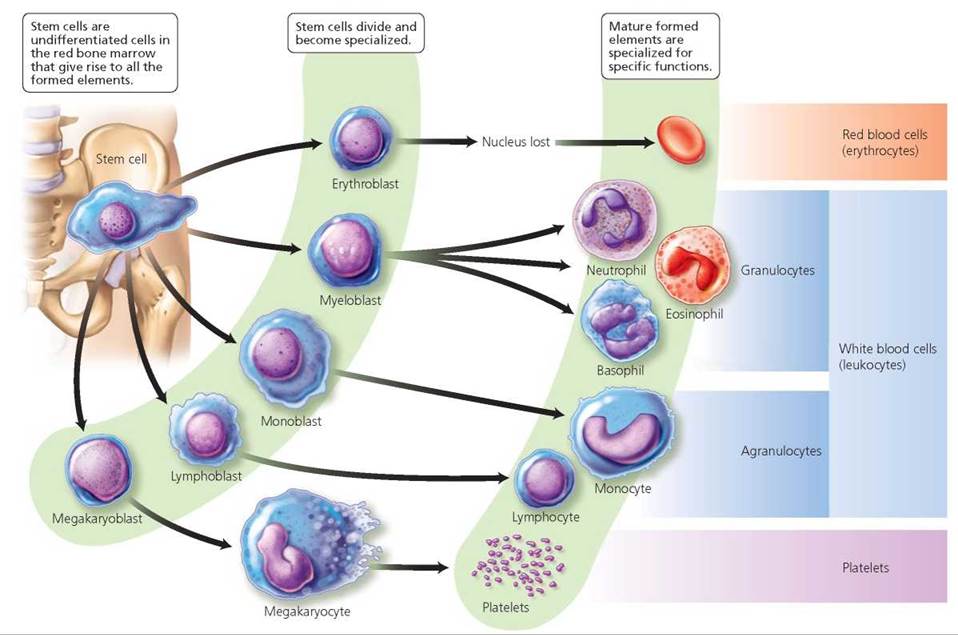


When a disease such as bone cancer destroys the bone marrow, causing medullary haemopoiesis to fail, extramedullary haemopoiesis may be initiated. This process is referred to as extramedullary haemopoiesis (meaning haemopoiesis outside the medullary cavity of adult bones). Throughout adulthood, the liver and spleen maintain their ability to generate the formed elements. In children, haemopoiesis can occur in all bones including the medullary cavity of long bones in adults, the process is largely restricted to the cranial and pelvic bones, the vertebrae, the sternum, and the proximal epiphyses of the femur and humerus. Following birth, most haemopoiesis occurs in the red marrow, a connective tissue within the spaces of spongy (cancellous) bone tissue. Prior to birth, haemopoiesis occurs in a number of tissues, beginning with the yolk sac of the developing embryo and continuing in the foetal liver, spleen, lymphatic tissue and eventually the red bone marrow. The process by which this replacement occurs is called haemopoiesis, or haematopoiesis (from the Greek root haima- = “blood” -poiesis = “production”). This restricts the frequency with which donors can contribute their blood. When you donate a unit of blood during a blood drive (approximately 475 mL), your body typically replaces the donated plasma within 24 hours, but it takes about 4 to 6 weeks to replace the blood cells. Thus, the body must form new blood cells and platelets quickly and continuously. Although one type of leukocyte called memory cells can survive for years, most erythrocytes, leukocytes, and platelets normally live only a few hours to a few months. The lifespan of the formed elements is very brief. Discuss the role of haemopoietic growth factors in promoting the production of the formed elements.Trace the generation of the formed elements (cellular components) of blood from bone marrow stem cells.By the end of this section, you will be able to:


 0 kommentar(er)
0 kommentar(er)
